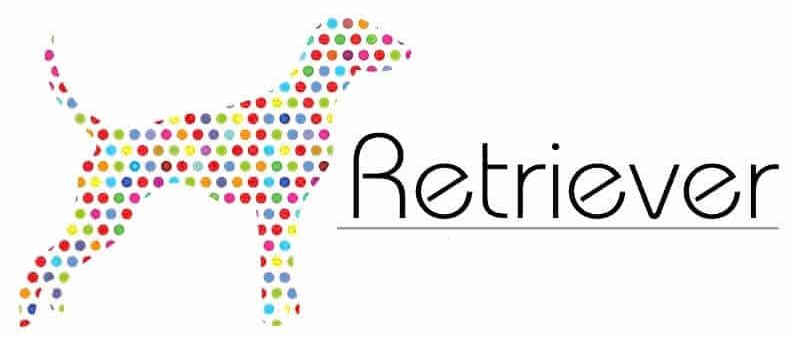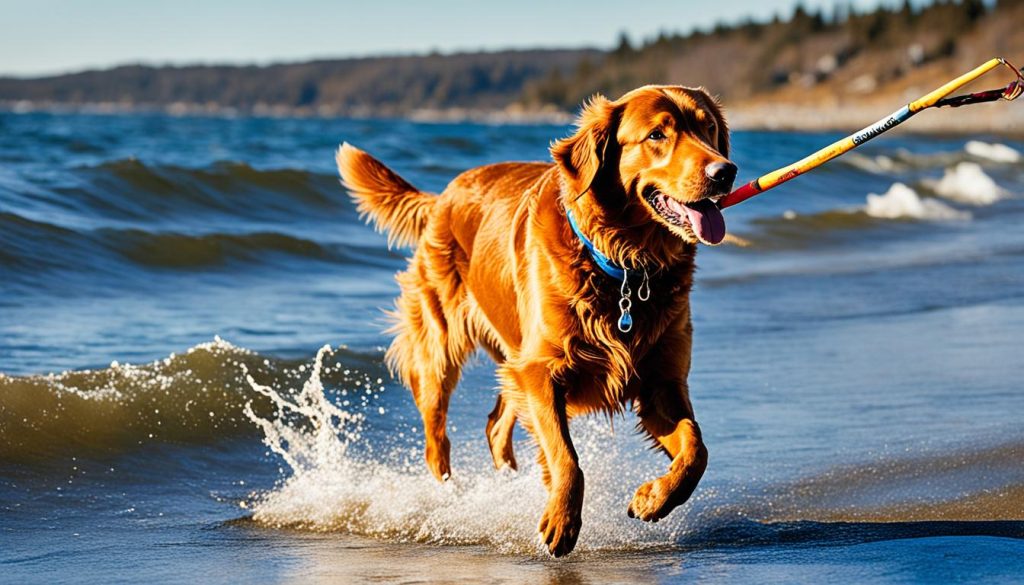The Nova Scotia Duck Tolling Retriever, due to its unique traits, captivates enthusiasts and pet owners. Originating from Nova Scotia, Canada, these dogs are renowned for their innovative waterfowl hunting skills. Their ability to lure ducks into range is unparalleled. Beyond their working capabilities, their friendly and astute nature makes them excellent family pets. Understanding their personality, high energy, unwavering loyalty, and trainable disposition is crucial for their care.
Their striking red-orange coat and agile physique symbolize a perfect blend of aesthetics and intellect. This breed’s intelligence demands attentive care in nutrition, grooming, and training. Owners must ensure their Nova Scotia Retrievers lead happy and energetic lives. Such diligence in care guarantees their wellbeing throughout their lives.
Key Takeaways
- The Nova Scotia Retriever’s capacity to “toll” ducks stands as a testament to the breed’s ingenuity and historical purpose.
- Characteristics such as high energy, loyalty, and intelligence make the Nova Scotia Retriever a commendable choice for active families.
- Insightful understanding of Nova Scotia Retriever care is a requisite for their physical well-being and emotional fulfillment.
- Grooming and dietary routines are pivotal elements in preserving the health and appearance of this dog breed.
- The amiable temperament of the Nova Scotia Retriever enhances its trainability and adaptability as a household pet.
Introducing the Nova Scotia Retriever
The Toller, or Nova Scotia Duck Tolling Retriever, embodies a significant history and lively temperament. It originates from Nova Scotia, Canada, and excels in hunting due to its spirited personality. Its versatile and intelligent nature is widely acknowledged, making it a preferred choice for dog enthusiasts.
Origin of the Breed
The breed’s history dates back to the early 19th century, initially bred for tolling—to lure waterfowl into range. These dogs have become indispensable in hunting, highlighting their cooperative nature and inclination to please.
Distinctive Features of the Nova Scotia Duck Tolling Retriever
The breed is distinguished by its striking red-orange coat and medium build, capturing the affection of many. Their information often emphasizes the alert and expressive eyes, symbolizing their keen and alert disposition.
A Comparison with Other Retriever Breeds
| Breed | Size | Energy | Intelligence | Temperament | Coat |
|---|---|---|---|---|---|
| Nova Scotia Duck Tolling Retriever | Moderate | High | Excellent | Enthusiastic, friendly | Red-orange, double-coated |
| Labrador Retriever | Large | High | Excellent | Outgoing, even-tempered | Dense, shorter coat |
| Golden Retriever | Large | High | Intelligent | Friendly, reliable | Dense, water-repellent |
The Nova Scotia Duck Tolling Retriever, being the smallest retriever, is noted for its agility and intellect. It differs from its larger counterparts through its unique ‘tolling’ hunting technique. The breed’s temperament suits agility sports, underlining their active working dog heritage. This comparison aims to clarify breed distinctions for potential owners.
Caring for Your Nova Scotia Retriever
Nurturing a Nova Scotia Retriever involves a detailed care plan tailored to their unique requirements. These vivacious dogs thrive when given equal attention to nutrition, physical activity, grooming, and disciplined training. Adapting care to address each of these facets not only promotes physical well-being but secures a well-balanced temperament. Thus, they evolve into outstanding companions.
Dietary Requirements for Optimal Health
Creating an appropriate diet for your Nova Scotia Retriever is pivotal for their health and longevity. These canines benefit from a diet that balances proteins, fats, and carbohydrates, in line with their activity levels. Engaging with a veterinary professional to formulate a meal regimen that considers the dog’s age, weight, and health requirements is advisable. Incorporating premium foods enhances their energy levels and overall well-being.
Exercise Routines for the Energetic Nova Scotia
Nova Scotia Retrievers possess an innate vitality that mandates consistent, vigorous exercise. Engaging them in activities that fuse physical and mental challenges—like fetch, agility drills, or scent detection—meets their engagement needs. Such regular physical activity not only maintains their physical condition but also prevents behavioral issues arising from boredom or pent-up energy. It encapsulates the essence of caring for a Nova Scotia Retriever.
Grooming Tips for a Healthy Coat
Attending to the grooming needs of Nova Scotia Retrievers is critical due to their double coats’ tendency towards matting. Regular brushing to clear away loose hair and unravel knots, along with occasional baths, ensures their coat remains pristine. Focusing on ear care and nail trimming is equally important to prevent infections and discomfort, fostering a healthy and well-maintained Nova Scotia Retriever.
Training Tips for Nova Scotia Retrievers
The inherent willingness of Nova Scotia Retrievers to please makes them exceptionally receptive to training. Implementing a consistent routine that employs positive reinforcement techniques is most effective. They show positive responses to rewards-based training; initiating socialisation early on benefits their inherently friendly nature. It is vital that training be regular and tailored to harness the breed’s intellectual capabilities and learning enthusiasm.
FAQ
What unique traits characterise the Nova Scotia Retriever?
Known also as the Nova Scotia Duck Tolling Retriever, this breed is distinguished by its vibrant red-orange coat. It exhibits high energy levels and employs intelligent hunting strategies. Being sociable and affable, the breed demonstrates high trainability. It excels as a family companion and a proficient hunter.
How did the Nova Scotia Retriever originate?
Originating in Nova Scotia, Canada, this breed was cultivated to ‘toll’ or lure waterfowl within hunters’ shooting range. It excels in this role due to a unique blend of enthusiasm and astute hunting capacities.
What sets the Nova Scotia Retriever apart from other retrievers?
Being the smallest retriever breed, the Nova Scotia Duck Tolling Retriever boasts distinct agility and speed. Its specialized hunting role, marked by a unique technique to entice game, sets it apart. Its diminutive stature enhances its nimbleness, a quality cherished by hunters and active households.
What are the dietary needs of a Nova Scotia Retriever?
Requiring a protein-rich, balanced diet, the Nova Scotia Retriever thrives on high-quality dog food tailored to its nutritional needs. Given its activity level, caloric intake must align with its energy output.
What type of exercise routine is ideal for a Nova Scotia Retriever?
For a Nova Scotia Retriever, an optimal exercise regimen includes physical and cerebral stimulation. Daily routines should encompass long walks, runs, and interactive play. Fetch games and engagement in agility trials offer extensive benefits, keeping the breed physically conditioned and mentally agile.
How should I groom my Nova Scotia Retriever to maintain its coat’s health?
Essential grooming for a Nova Scotia Retriever involves regular brushing to prevent matting and evenly distribute natural oils through their double coat. Occasional baths are recommended. Ensuring clean, dry ears is crucial to avoiding infections, especially in this water-loving breed.
What training methods work best with the Nova Scotia Retriever’s temperament?
The Nova Scotia Retriever’s temperament is best suited to positive reinforcement and reward-based training. This intelligent breed thrives on consistent training focused on praise and rewards. Such methods reinforce good behaviour and facilitate the acquisition of new skills efficiently.

